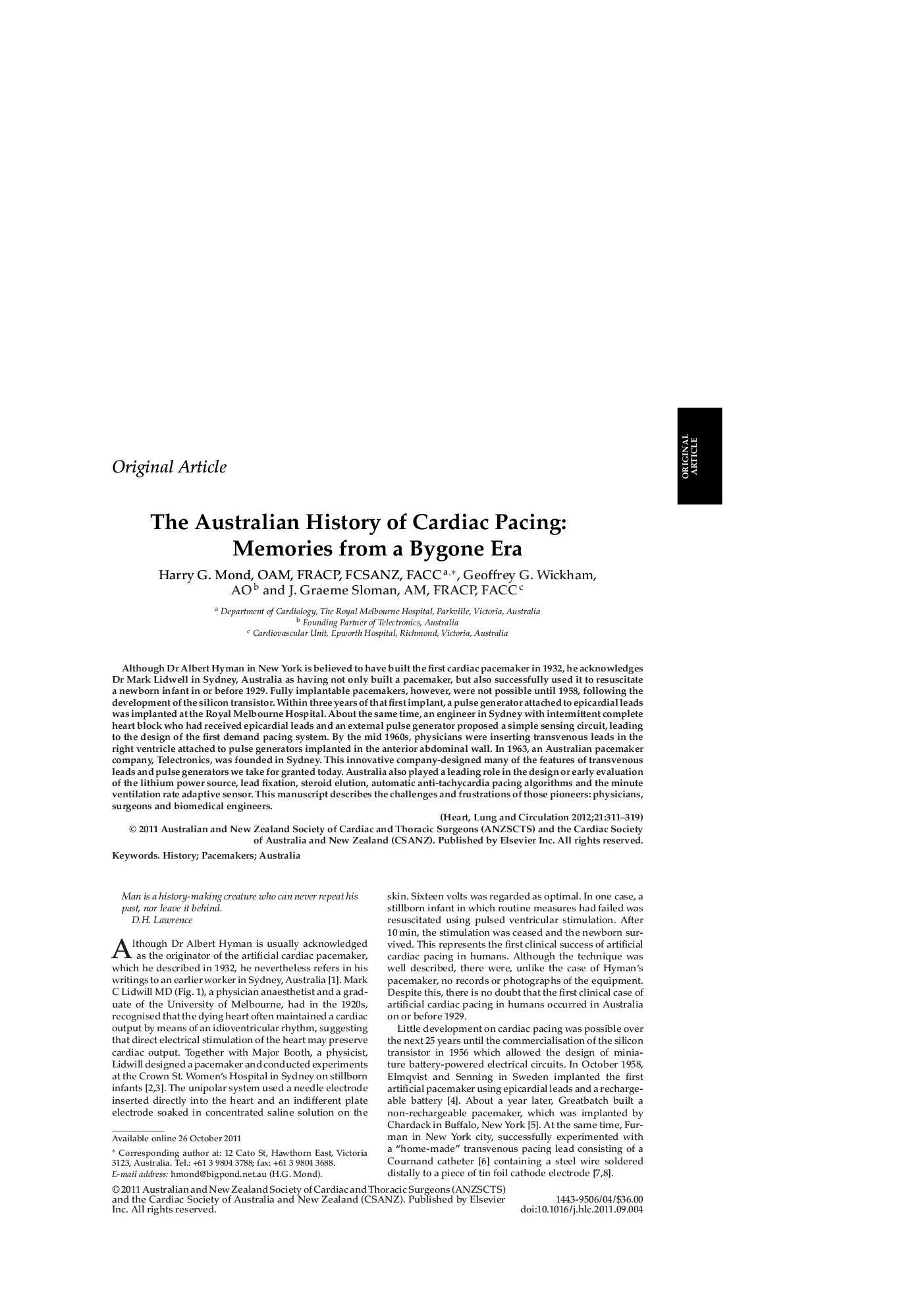| Article ID | Journal | Published Year | Pages | File Type |
|---|---|---|---|---|
| 2919662 | Heart, Lung and Circulation | 2012 | 9 Pages |
Although Dr Albert Hyman in New York is believed to have built the first cardiac pacemaker in 1932, he acknowledges Dr Mark Lidwell in Sydney, Australia as having not only built a pacemaker, but also successfully used it to resuscitate a newborn infant in or before 1929. Fully implantable pacemakers, however, were not possible until 1958, following the development of the silicon transistor. Within three years of that first implant, a pulse generator attached to epicardial leads was implanted at the Royal Melbourne Hospital. About the same time, an engineer in Sydney with intermittent complete heart block who had received epicardial leads and an external pulse generator proposed a simple sensing circuit, leading to the design of the first demand pacing system. By the mid 1960s, physicians were inserting transvenous leads in the right ventricle attached to pulse generators implanted in the anterior abdominal wall. In 1963, an Australian pacemaker company, Telectronics, was founded in Sydney. This innovative company-designed many of the features of transvenous leads and pulse generators we take for granted today. Australia also played a leading role in the design or early evaluation of the lithium power source, lead fixation, steroid elution, automatic anti-tachycardia pacing algorithms and the minute ventilation rate adaptive sensor. This manuscript describes the challenges and frustrations of those pioneers: physicians, surgeons and biomedical engineers.
